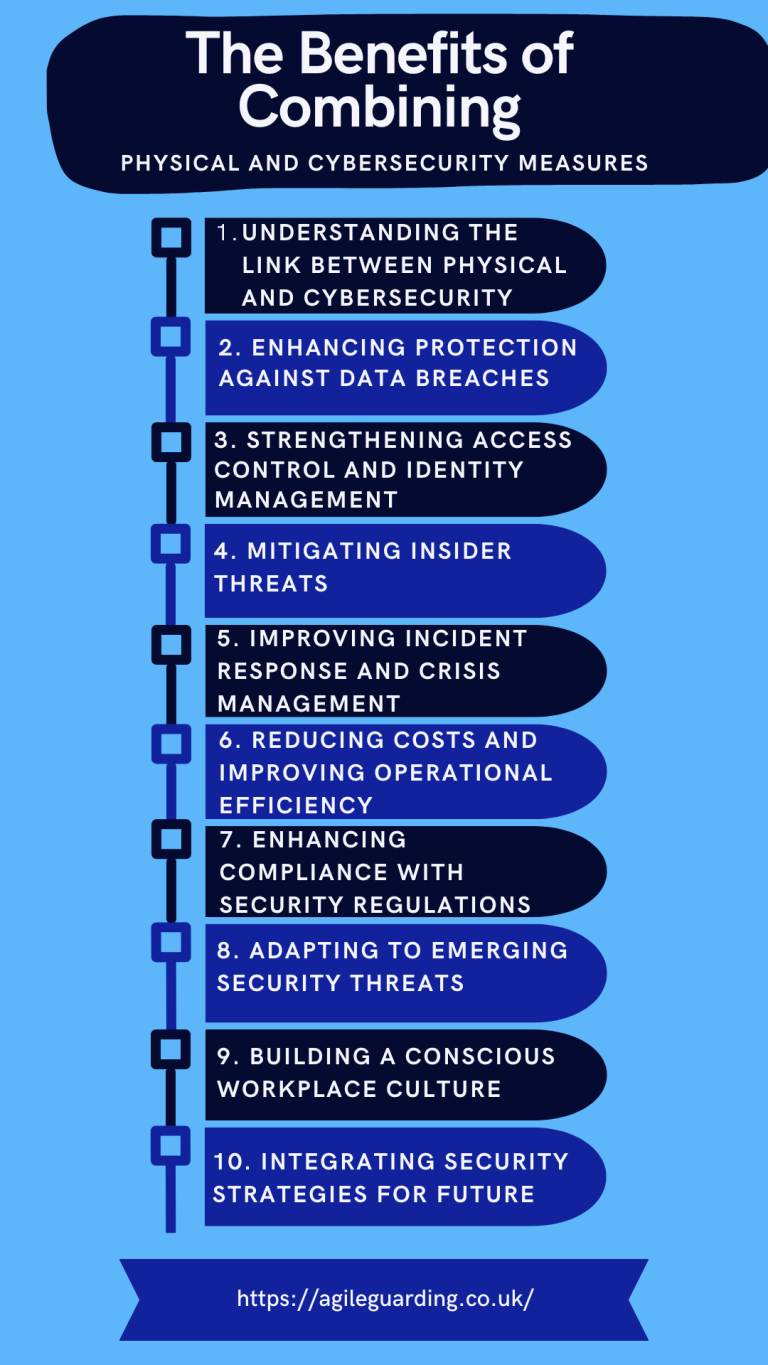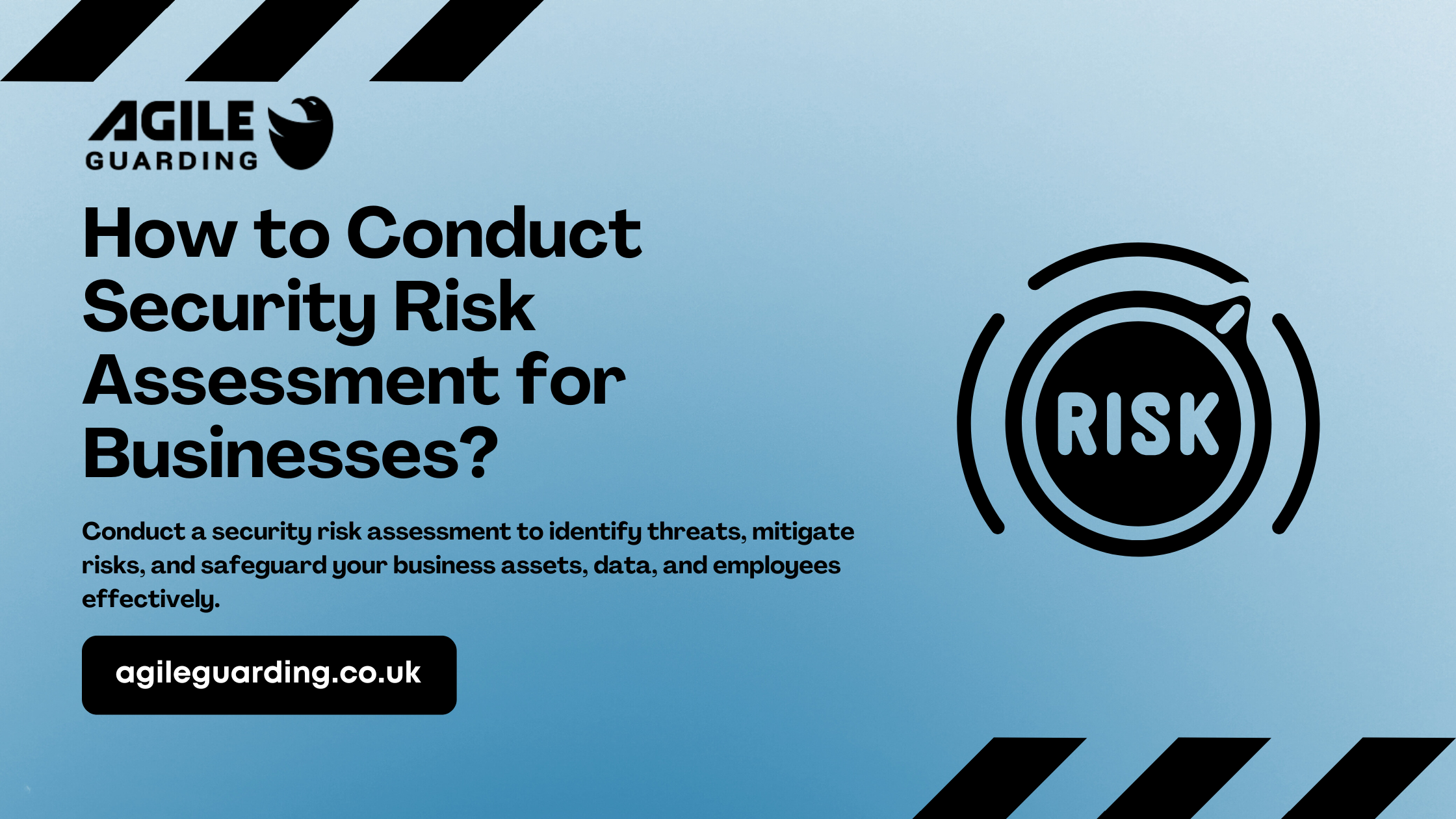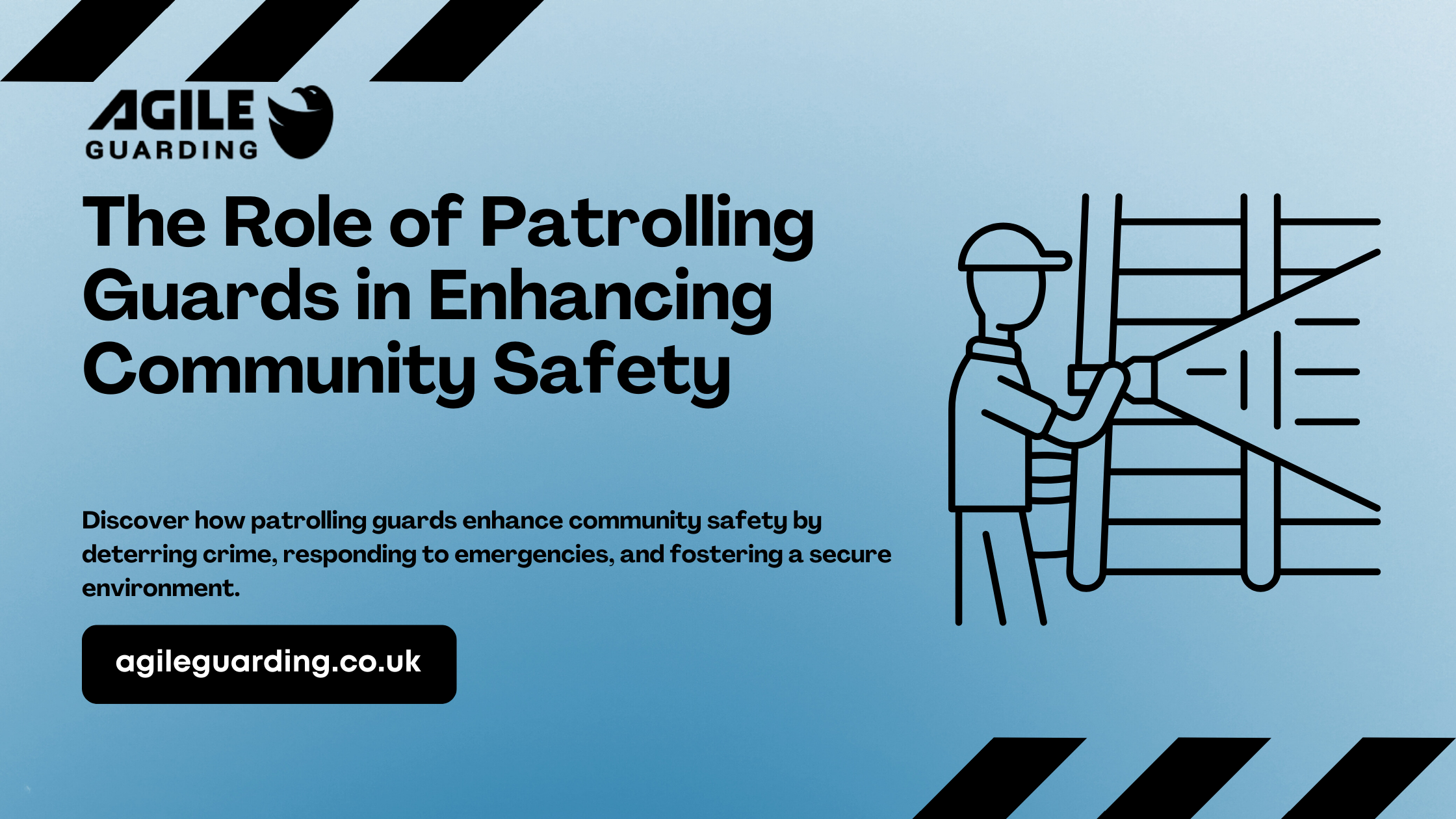How to Conduct Security Risk Assessment for Businesses? The technologically advanced and fast-paced world of today is faced with multiple security challenges …
The Benefits of Combining Physical and Cybersecurity Measures
Apart from the countless benefits of the digital world of today, the complex nature of crimes has become the biggest security concern. Businesses, organizations, and people confront threats from both the physical and cyber domains. While many businesses invest in either physical security (security guards and access control systems) or cybersecurity (firewalls and encryption), combining the two measures is the most effective way to safeguard assets, data, and employees. By integrating physical and cyber security, businesses may develop a holistic security plan that addresses multiple threats from numerous perspectives. This comprehensive strategy guarantees that security breaches, whether digital or physical, are identified, avoided, and managed effectively.
Integrating Physical and Cyber Security

Read below to unravel the advantages of the hybrid security plan addressing both physical and cyber security concerns and its importance for business owners in an increasingly interconnected dynamic world.
Understanding the Link Between Physical and Cybersecurity:
Security dangers are no longer limited to your online presence. A cyberattack may disable physical security systems, whereas a physical breach can result in digital theft. Hackers can deactivate security cameras and alarm systems, allowing for physical break-ins. An intruder can take down the servers of a business or hard drives, exposing critical information. Unauthorized personnel may acquire entry to a protected facility and carry out cyberattacks from within. Integrating physical and cyber security means that both levels of protection collaborate to efficiently detect and eliminate threats.
Enhancing Protection Against Data Breaches:
Data breaches can occur as a result of inadequate cybersecurity protection or a lack of physical security. Unattended workstations can be abused by insider threats. Unauthorized individuals can get access to server rooms that are not properly guarded. Stolen access cards can be used by cybercriminals to gain access to restricted places and install malware. Businesses that combine physical and cyber security can employ measures like biometric access control, surveillance monitoring, and network encryption to protect critical data from all possible sources of attack.
Strengthening Access Control and Identity Management:
Controlling who has access to certain places or information is a crucial part of security. Physical access controls like keycards and locks, along with cyber access control like passwords and multi-factor authentication, must be combined for an effective and comprehensive security. Biometric authentication including fingerprints or face recognition is suitable for both digital and physical access. Smart access cards may control facility access as well as network logins. Cybersecurity monitoring can identify suspicious login attempts that are associated with illicit physical access. An integrated strategy improves identity management, reducing the likelihood of unauthorized workers getting access to restricted locations or systems.
Mitigating Insider Threats:
Employees, contractors, or partners with access to critical data and facilities are the first security risk to a business. Thus physical and cyber security measures aid in the detection and prevention of insider threats. Surveillance and activity records are used to monitor both online and offline activities. Access is restricted based on staff roles, ensuring that only necessary information is available to the relevant employees. Threats from employees can also be prevented by implementing security regulations requiring dual authentication for sensitive processes. When physical and cyber security teams work together, businesses may spot suspicious activity early and take action before a security breach happens.
Improving Incident Response and Crisis Management:
A security breach, whether physical, digital, or both, requires a prompt and efficient response to prevent it from escalating. Businesses using integrated security systems can detect threats quickly, and respond more efficiently. In case of a cyber attack, security staff may physically safeguard key infrastructure and reduce damage. A single response team guarantees that both physical and digital assets are safeguarded simultaneously.
Reducing Costs and Improving Operational Efficiency:
Having separate physical and cybersecurity teams can increase the cost of the security budget. Businesses can integrate both to optimize resource allocation as a single security team may manage both domains, minimizing redundancy. It also helps in enhancing automation by monitoring both cyber and physical environments. Thereby eliminate any loopholes within the security plan. This unified strategy guarantees that no part of security is missed. An integrated security approach provides better protection at a reduced cost.
Enhancing Compliance with Security Regulations:
Many sectors must follow tight security standards, such as GDPR (General Data Protection Regulation) that governs data protection or ISO 27001 which governs information security management. Organizations that integrate physical and cyber security may assure complete adherence to these rules, avoiding fines and legal implications. Security plans that cover both areas offer full protection to such organizations and their consumers.
Adapting to Emerging Security Threats:
Cybercriminals and physical intruders are continually evolving their approaches. Businesses that only use one sort of security protection are more exposed to contemporary security threats. Attacks fueled by ransomware may compromise security systems, leaving businesses vulnerable to physical invasions. IoT (Internet of Things) devices, such as smart locks and security cameras, can be hacked if they are not adequately protected. Social engineering incidents can persuade employees into giving illegal access to guarded locations. A combined physical and cyber security approach keeps businesses ahead of new threats by adjusting their defenses proactively.
Building a Conscious Workplace Culture:
Security is more than simply technology as it also involves people. Employees are critical to preserving physical and cyber security, and an integrated security strategy fosters a better security culture by training employees to spot both cyber hazards as well as physical threats. This helps in promoting security awareness. Implementing clear security policies by establishing guidelines that guarantee the staff will adhere to security measures under all circumstances. When businesses emphasize both physical and cyber security, their workers become the first line of defense against security risks.
Integrating Security Strategies for the Future:
As technology evolves, the distinction between physical and digital security becomes harder to define. Businesses must implement comprehensive security solutions, which include AI-powered surveillance cameras that can identify security concerns in real time. Zero-Trust Security Models ensure that no user, device, or network segment is implicitly trusted. Blockchain for Security aims to improve authentication and data integrity using modular technologies. Businesses that implement foreseeable security methods may keep ahead of new threats and provide long-term safety.
Also Read: 6 Best Security Companies in London
Contact Us Now!
Are you ready to strengthen your business with a holistic security approach? Here at Agile Guarding we offer comprehensive security solutions that integrate physical and cyber security to protect your business from all perspectives. Contact us today for a free consultation to discuss how we can enhance your security strategy and safeguard your assets against evolving threats!
Conclusion
In today’s rapidly evolving security world, businesses cannot afford to keep physical and cybersecurity measures separate. Physical and cyber security must be combined to provide a complete security layout that can withstand all forms of attacks. Physical security measures such as access control, surveillance, and security staff can be combined with cybersecurity solutions such as firewalls, encryption, and intrusion detection to reinforce defenses, improve response times, and minimize overall security risks. A comprehensive security approach protects businesses from both digital and physical threats, therefore improving safety, compliance, and efficiency.
Also Read: 10 Reasons to Have Canine Security Dogs
Read our blogs
Understanding the Role of Keyholding Services in Business Security Businesses of all scales must prioritize security in today’s dynamic and ever evolving …
How Night Security Guards Improve Business Safety After Hours? Running a business entails more than simply managing day-to-day operations. When the doors …
The Role of Patrolling Guards in Enhancing Community Safety Ensuring community safety is a basic necessity for creating a peaceful and thriving …





